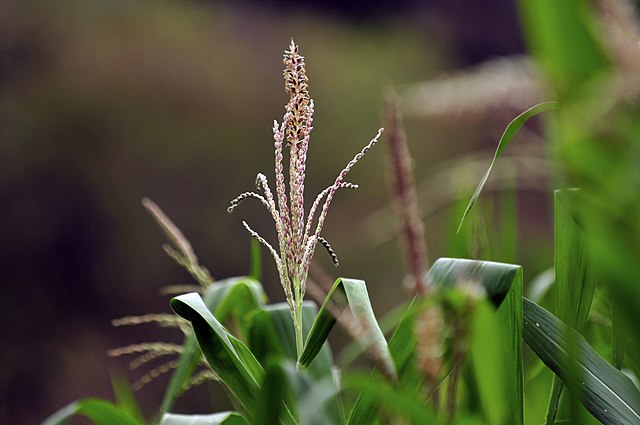The Organization for Economic Cooperation and Development (Ocde), together with the Food and Agriculture Organization of the United Nations (FAO), published their annual assessment, with the prospects for the next decade of national, regional and global agricultural commodity markets, which projects agricultural and fisheries production in the region to expand by 12% by 2032.
Although multilateral organizations clarified that this growth is slower than in the past, they project that almost 70% will come from crop production, a more moderate expansion in livestock of 11% and a contraction in fishing production of 10%.
The report details that the share of crops in the total value of production is expected to increase more to almost 60% by 2032, with an additional 42% attributed to livestock and 9% to fishing. “The region is an important contributor to world agriculture. Between 2020 and 2022, it accounted for 14% of the net value of agricultural and fisheries production worldwide and its share of total exports is more than 17%. The importance of agricultural exports in the region is further highlighted by its growing share in the total value of production, which has increased by 45%,” the report relates.
This growth in agricultural production in the region is mainly due to the abundance of land, in a combination of expansion and intensification. According to projections, the total land used for agriculture is expected to increase by 6.3 million hectares (ha). This includes an expansion of 7.1 million hectares of agricultural land, as well as a small reduction in pastures.
Latin America and the Caribbean already represent just over half of the world’s soybean production, so these entities project that participation will increase to 54% by 2032. “Consequently, fluctuations in supply within the region, particularly Brazil as its largest producer, can cause substantial volatility in world prices. This was evident from the sharp increase in soybean prices amid drought conditions in 2021,” the report says.
Another variable that the document contemplates has to do with the climate, since it states that, under normal climatic conditions, the region has a wide potential to fill the supply gaps resulting from the reduction in production in Ukraine, on account of the war with Russia.
Another of the most important commodities in the agricultural sector is corn, but, although the contribution of this cereal is lower than that of soybeans, the growth in production of 1.5% per year is sufficient to boost the region’s participation in total corn production to 19% by 2032.
Livestock products
Latin America and the Caribbean provide 16% of the world’s livestock production and, although the 1% annual growth is expected to be slower than in the crop sector, it is enough to maintain its contribution to the global value.
One of the largest growths is projected in poultry meat, which would represent more than 60% of the additional meat production by 2032. This is mainly due to its short production cycle, “which helps to quickly improve genetics and food conversion, supporting the growth prospects of this commodity,” reads the report.
Finally, the report projects that beef and pork will grow 0.9% and 1.2% annually respectively, but the beef sector is larger and will represent 22% of the additional meat production by 2032. Fish production will decrease by 9% by 2032, due to a 10% contraction in total production.
World wheat production and stocks are increasing
World wheat production and stocks increased between 2013-2022, although that of corn and other secondary cereals was not enough for global demand. As for rice, production was above the average level, but with relatively high prices. The value of wheat and secondary cereals in 2021-2022 were the highest recorded in the last two decades, but they began to fall at the end of July 2022 when Russia and Ukraine agreed to the Black Sea Agreement.
International meat prices remained high
During the previous year, international meat prices were high, except for sheep. These circumstances were influenced by animal diseases, such as avian influenza that hit poultry production, especially in countries such as the United States, the increase in input costs and extreme climatic conditions, which were obstacles to the growth of meat production. Even with these problems, there was a general expansion in meat production.
“Latin America and the Caribbean is a region that could produce food for more than 1.3 billion people: that is, twice its current population.”
Dairy products increased by 20% in 2022, but with losses at the end
International dairy prices increased 20% during the past year, but began to decrease towards the end of 2022. This situation was presented by the increase in the cost of inputs, which drove the increases. In terms of production, milk increased globally but was slower in that period of time than in previous years. China influenced the decrease in world trade in these products, due to lower imports of milk and its derivatives.
Oilseed prices have fallen from historic highs
The report reveals that international oilseed prices fell from historic highs observed during 2022, which, for example, favored the good timing of palm oil. Although they have fallen, they remain above the average levels of recent years. Those price reductions were supported by the recovery of world soybean and rapeseed production, despite losses in sunflower seed production in Ukraine.
Global demand for sugar would increase at a slower rate
The report reveals that global demand for sugar will increase in the current season, but at a much slower pace accompanied by the slowdown in economic growth. Although Brazil, which is the main global supplier of this product, showed a recovery, there is a decrease in the production prospects of other key exporters. There are also high input costs, which would offset part of the general downward pressure on international sugar prices.
Source: Agronegocios.co
